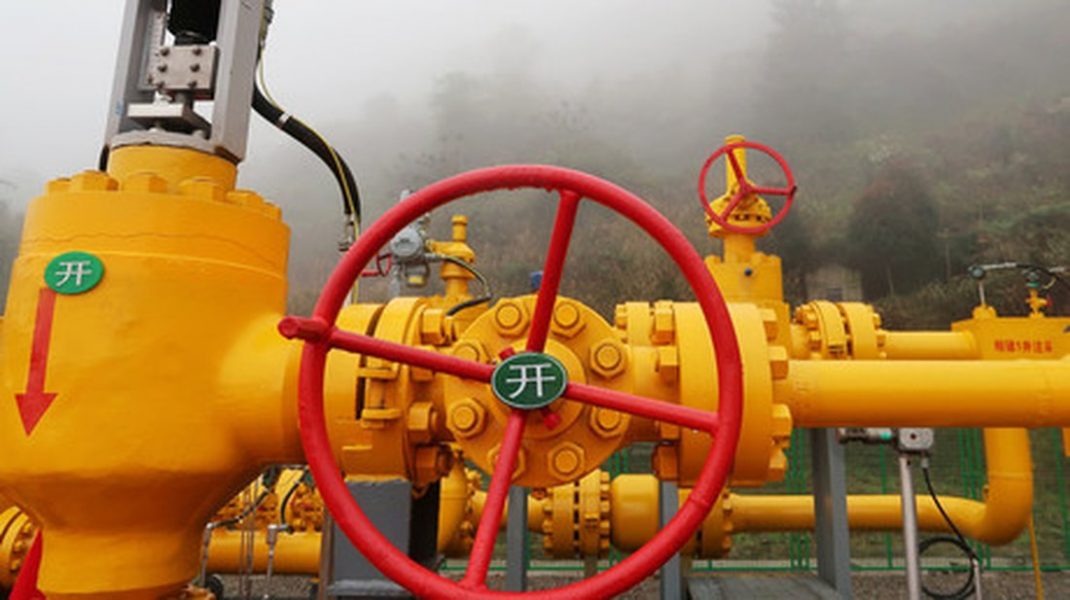By Chris Stephen
 National Oil Corporation reports its lowest production since the blockade started in January as external forces gear up for clash over Sirte basin oilfields.
National Oil Corporation reports its lowest production since the blockade started in January as external forces gear up for clash over Sirte basin oilfields.
Libya has posted its lowest monthly income from hydrocarbons since the start of the six-month blockade of its oil ports and fields, earning its National Oil Corporation (NOC) just $45.5mn during June.
The blockade, imposed by General Khalifa Haftar’s Libyan National Army (LNA), has seen production plunge from 1.2mn bl/d when it began on 17 January to c.90,000bl/d now, almost all of which is from offshore platforms. The shutdown, backed by the unofficial Tobruk government—which is warring against the UN-recognised government in Tripoli—has cost $6.5bn in lost revenue.
Libyan oil income goes not to the NOC but the Tripoli-based Central Bank of Libya (CBL), with funds held in European banks. Libya’s rival governments request money from the CBL for their budgets, with NOC financed from the Tripoli government. It means oil revenue could indirectly fund both sides of the conflict.
Like the NOC, the CBL enjoys autonomy, helped by the constitutional wilderness created by Libya’s two governments being at war. But the CBL has refused to reveal its finances, either to the public or to rival governments. Nor has it confirmed the $87bn foreign reserves the World Bank estimates it holds.
Robust blockade
There is no end in sight to the blockade. Libya is braced for a clash between pro-Tripoli Turkish forces and pro-Tobruk Egyptian forces for control of the eastern Sirte basin oilfields.
Libya’s NOC is warning that even if the “illegal blockade” is lifted, production would be half the previous level, 650,000bl/d to the end of 2021, because of damage and neglect of facilities.
NOC chairman Mustafa Sanallah has long warned that oil and gas—which account for 95pc of Libya’s export earnings—are the focus of the civil war, which marked its sixth anniversary in July.
That focus has now sharpened, with Turkey adding air power, troops and equipment to the Tripoli government forces massing for an offensive to recapture the Sirte basin, also known as the Oil Crescent.
This crescent-shaped territory dotted with oil fields stretches 700km southeast of Sirte and contains two-thirds of production in the country, which holds Africa’s largest reserves.
Turkey’s deployment of air power and Syrian mercenaries in early summer enabled Tripoli government forces to break a year-long siege of the capital by Haftar, pushing his forces out of much of western Libya.
The red line
Haftar’s retreat ended at the highway running from Sirte south to Jufra, the last natural defence barrier before the Sirte basin. Turkey-backed forces have been gathering 80km west of Sirte for an offensive to capture the oil fields since mid-July. But Egypt has warned it will intervene militarily if Turkish-backed forces cross the Sirte-Jufra road, known as the ‘red line’.
An Egyptian armoured brigade is stationed at the border, which would take up to 24 hours to deploy to the red line. However, Egyptian and UAE airpower would likely augment LNA jets striking any Tripoli attack.
The wild card, military and politically, is Tobruk-backing Russia. The Pentagon says Moscow has at least 14 jets, a mix of fighters and bombers, stationed at Jufra that are able to intervene against Tripoli forces.
Russian mercenary outfit the Wagner Group has the equivalent of an armoured infantry brigade aiding Haftar, its force split between holding Libya’s largest oil field, Sharara, and its largest oil port, Es Sider, with units also on the red line.
Moscow has indicated its willingness to negotiate a Libya ceasefire with Turkey, but the sticking point for both Tobruk and Tripoli will be which side gets the Sirte basin.
Neither Russia nor Turkey has significant oil assets in Libya, but both are eyeing opportunities. Turkey says the Tripoli government has given it seven exploration sites, at undisclosed locations, with work due to begin in September.
Russia’s Rosneft signed downstream agreements earlier this year allowing it to move Libyan oil via Trieste to refineries in Germany.
The NOC says mercenaries aligned with the LNA now occupy key oil sites, including three of the Sirte basin’s five oil ports, with a mix of Wagner and unidentified mercenaries at Es Sider, Ras Lanuf and Zueitina.
Mercenary units also occupy workers’ accommodation at the Zella oilfield, on the red line, and a nearby Schlumberger oil services company camp.
It is unclear whether the mercenary positioning is political—to deny use of key oil infrastructure—or tactical. The mercenary units may be positioned at oil ports to allay Tobruk concerns that Turkish navy ships offshore could support an amphibious capture of the ports by Tripoli forces.
The red line itself is taking on the appearance of a de facto border between east and west Libya, with LNA excavators completing a sand berm along it.
The US has emerged as the key mediator, with Washington interested in both limiting Russia’s footprint in Libya and preventing its allies Egypt and Turkey from coming to blows.
US mediators have identified an underlying cause of the war as being control of oil income, rather than the oil fields themselves.
In July, the US wrestled agreement from the CBL for a long-delayed audit by international accountants Deloitte, a key demand by Haftar and the Tobruk government.
However, transparency is only the first hurdle. If the accounts are made public then Tobruk, controlling the Sirte basin, is likely to demand a larger share of oil revenue as the price for ending the blockade.
___________





